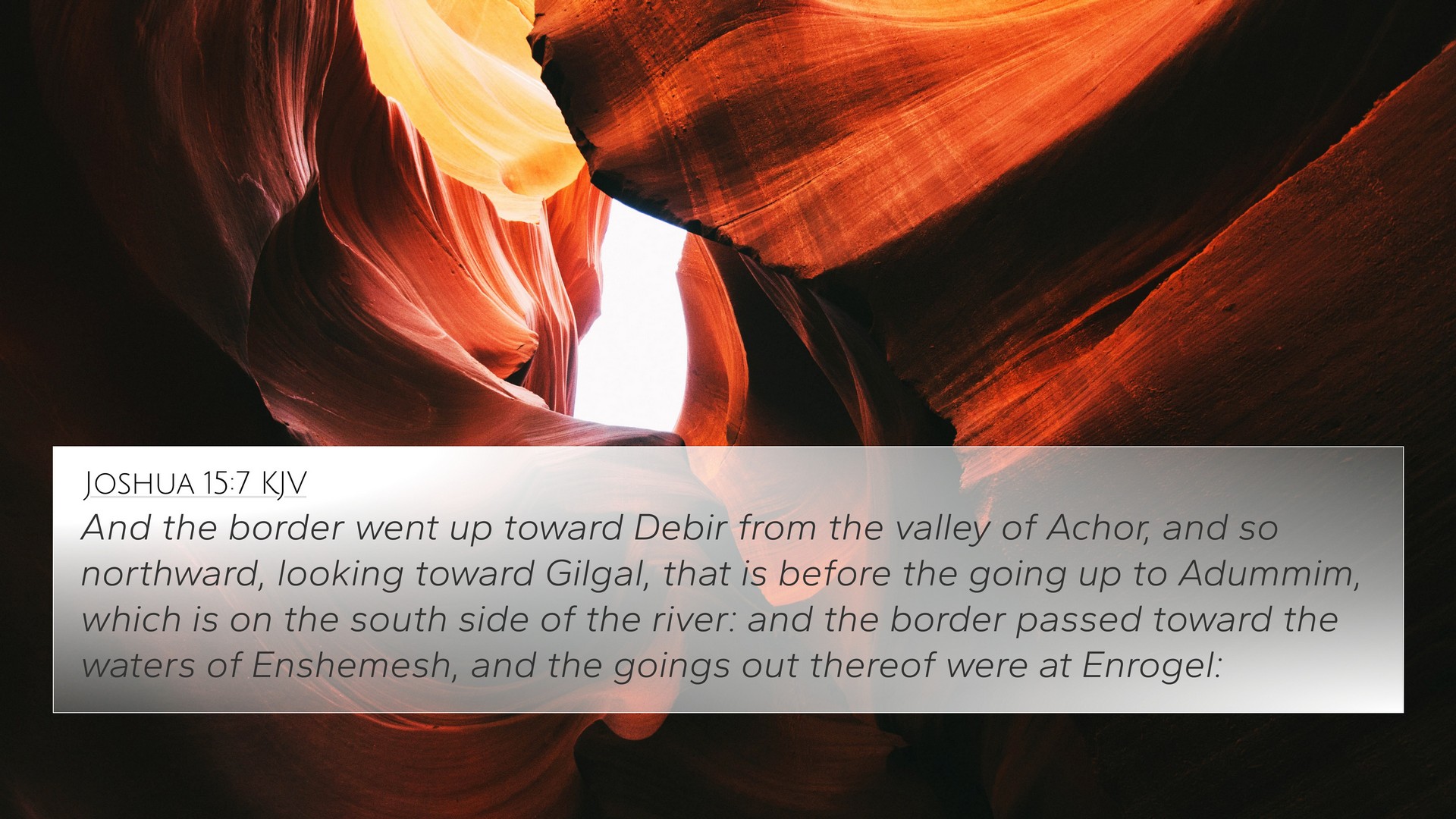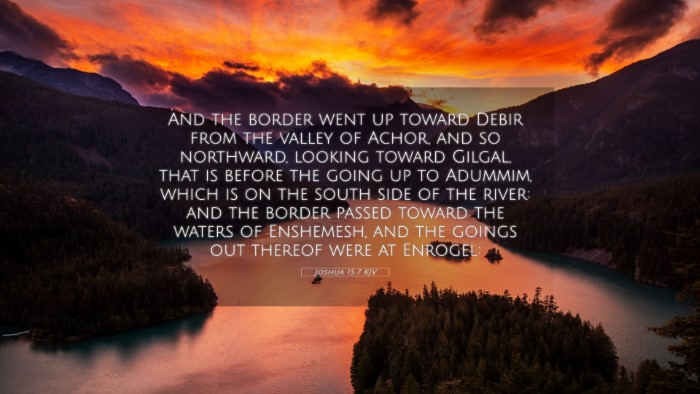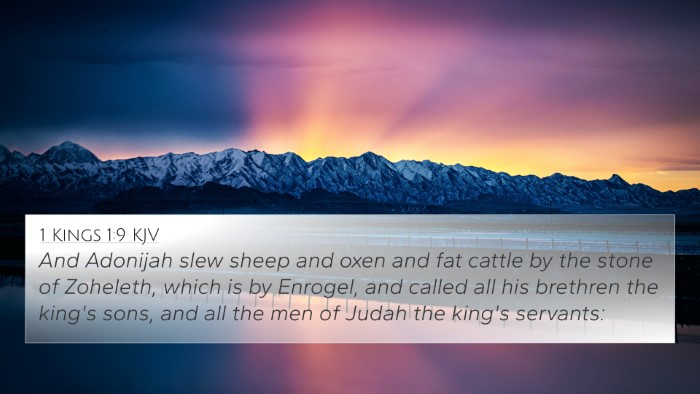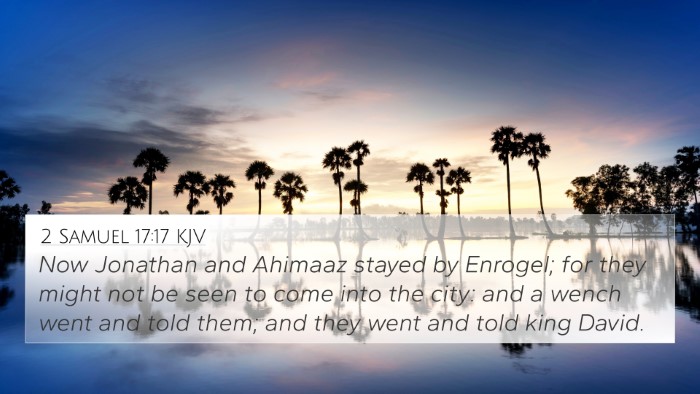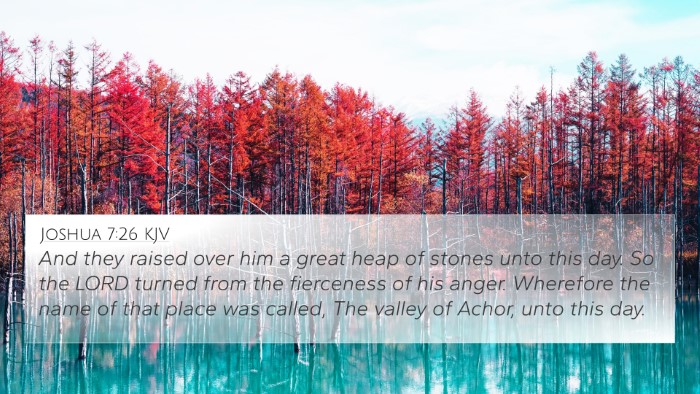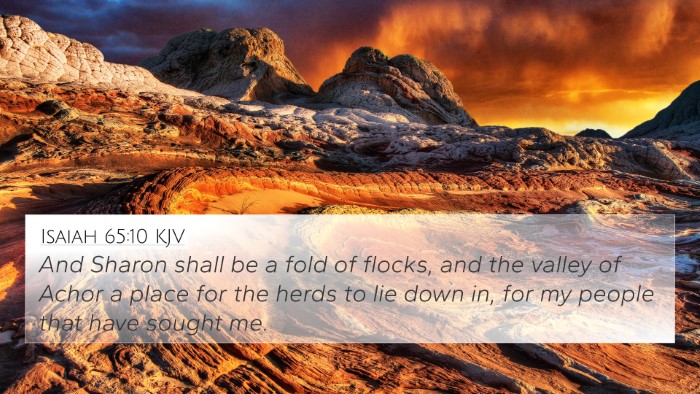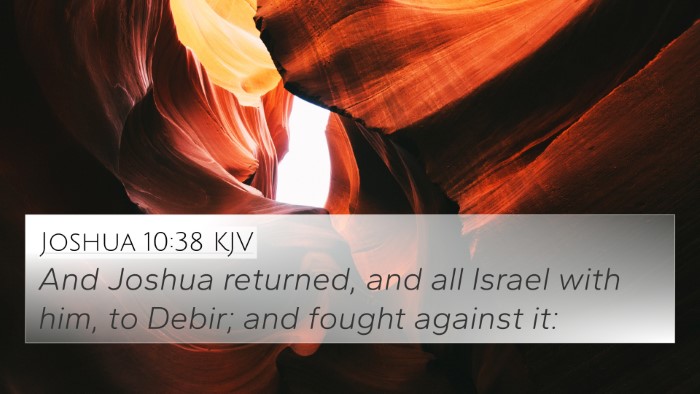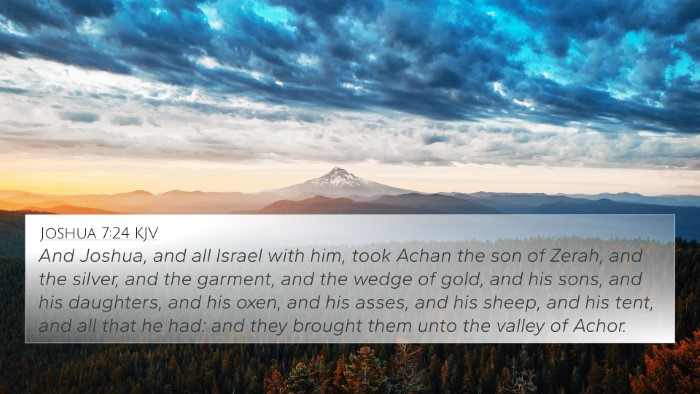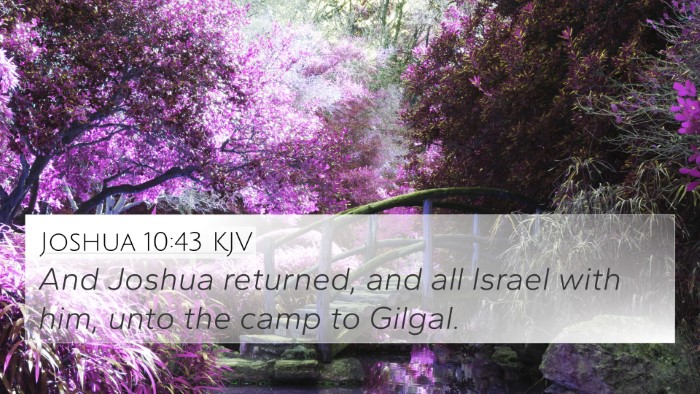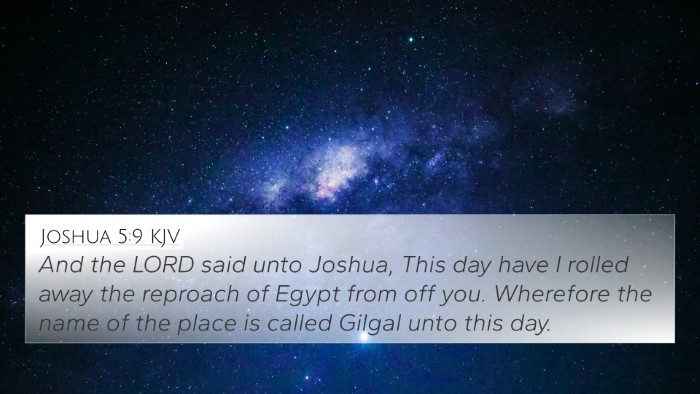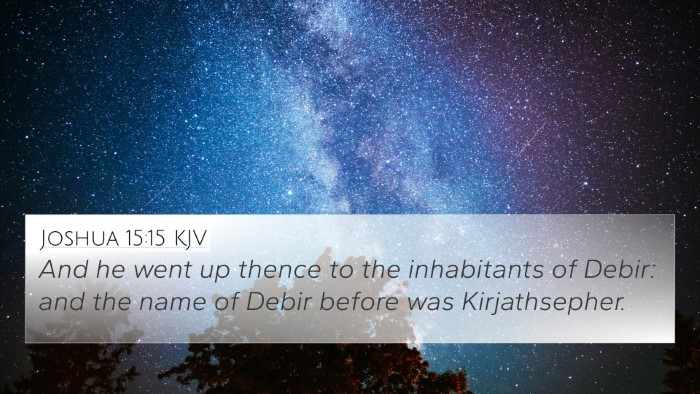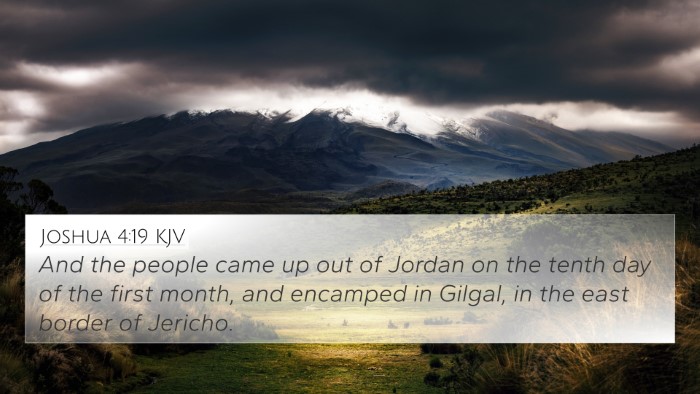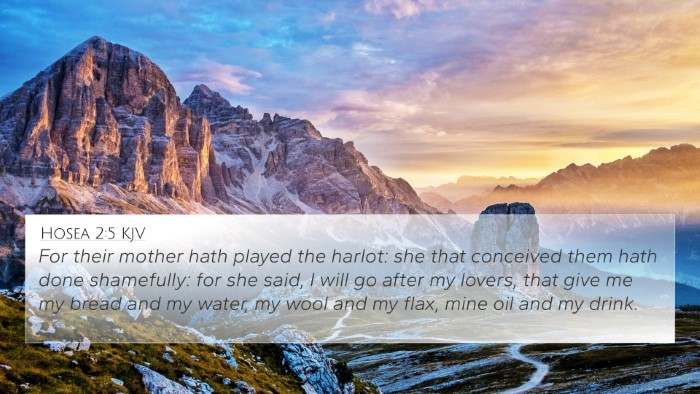Understanding Joshua 15:7
Joshua 15:7 reads: "And the border went up toward Debir from the valley of Achor, and so northward, turning toward Gilgal, which is over against the valley of Edom, which was the south side of the river; and the border of the sea of salt was the north side of the river; and the border of the sea of salt was the south side of the river; and the border was to the outside of the river." This verse details the specific geographical boundaries of the inheritance assigned to the tribe of Judah.
Commentary Insights
Geographical Significance
According to Matthew Henry's Commentary, the specific borders serve a dual purpose: they define the physical territory allocated to Judah and exemplify God’s providence in the distribution of land among His people, emphasizing the fulfillment of His promises.
Adam Clarke also notes how the borders signify the distinction of Judah among the tribes of Israel, marking a significant location that would later become of great importance in biblical history.
Theological Implications
Albert Barnes reflects on the spiritual implications of land assignments, viewing them as representative of the inheritance of the faithful. The careful delineation of the borders illustrates God's meticulous care for His people, reminding us that each person's calling has defined boundaries set by divine guidance.
Connections with Other Bible Verses
Joshua 15:7 serves as a vital link in the broader narrative of the Israelites' journey to the Promised Land. Below are key Bible verse cross-references relevant to this passage:
- Numbers 34:1-12 - Discusses the boundaries of Canaan, establishing context for the land's division.
- Deuteronomy 3:12-20 - Details the inheritance of land by the tribes, including insights into Judah's early boundaries.
- 1 Corinthians 9:24 - Uses the metaphor of running a race, reflecting the idea of defined paths or borders that guide believers.
- Hebrews 11:9-10 - Highlights the faith of Abraham living as a stranger in the promised land, linking to the promised inheritance theme.
- Jeremiah 32:43-44 - Prophecies concerning land ownership and the restoration of Israel, which resonates with the theme of divine allotment.
- Matthew 5:5 - "Blessed are the meek, for they shall inherit the earth," connecting spiritual inheritance with land promise.
- Revelation 21:1-2 - The description of the new heaven and new earth, echoing the enduring promise of land and divine presence.
Cross-Referencing Methodologies
Understanding the connections between Bible verses can enrich one’s study and comprehension. Here are tools for Bible cross-referencing:
- Bible Concordance - A practical resource for finding thematic and direct connections across scriptures.
- Bible Cross-Reference Guide - Offers structured references to similar themes and narratives.
- Cross-Reference Bible Study - Methodical approach comparing verses to uncover deeper meanings and insights.
- How to Use Bible Cross-References - Techniques for effectively engaging with layered meanings in scripture.
- Bible Reference Resources - Various study tools available for researchers seeking broader contextual knowledge.
- Bible Chain References - A method that allows for connecting numerous scriptures within a focused theme.
Thematic Bible Verse Connections
Cross-referencing provides insightful parallels across diverse biblical texts which can affirm doctrinal understandings and spiritual truths. Examples include:
- Identifying Connections Between Old and New Testament - Exploring shared themes such as faith, promise, and inheritance.
- Comparative Study of Pauline Epistles - Understanding how Paul's letters reinforce Old Testament teachings.
- Cross-Referencing Psalms with New Testament Teachings - Many New Testament principles are rooted in Psalmic wisdom and prophecy.
Conclusion
Joshua 15:7 provides a detailed account of the borders inherited by Judah, serving not just as a historical record but as an illustration of God's promise and providence. By employing tools for Bible cross-referencing, one can explore these themes further and deepen their understanding of scriptural interconnections and theological implications.
